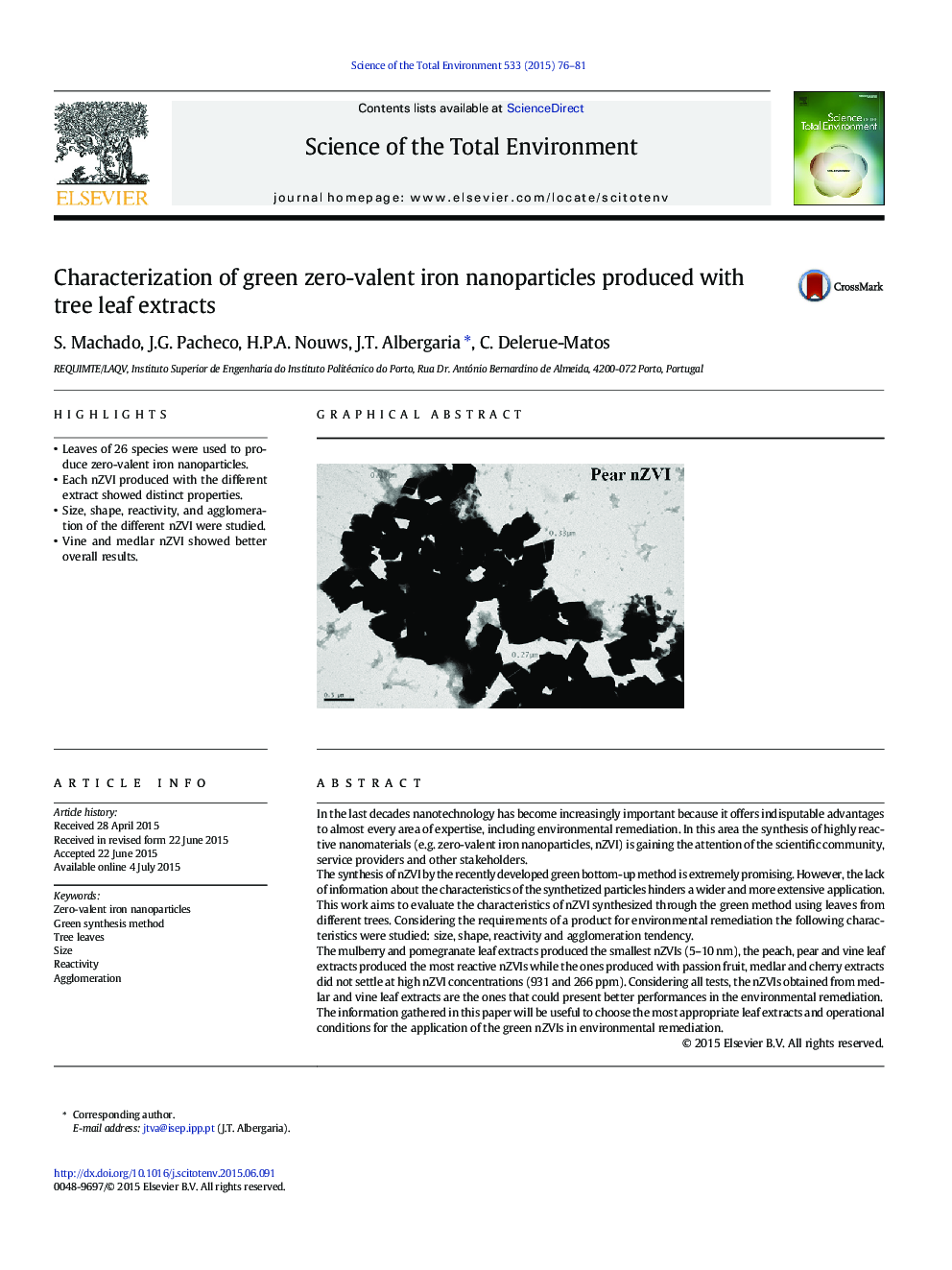| کد مقاله | کد نشریه | سال انتشار | مقاله انگلیسی | نسخه تمام متن |
|---|---|---|---|---|
| 6326200 | 1619751 | 2015 | 6 صفحه PDF | دانلود رایگان |
- Leaves of 26 species were used to produce zero-valent iron nanoparticles.
- Each nZVI produced with the different extract showed distinct properties.
- Size, shape, reactivity, and agglomeration of the different nZVI were studied.
- Vine and medlar nZVI showed better overall results.
In the last decades nanotechnology has become increasingly important because it offers indisputable advantages to almost every area of expertise, including environmental remediation. In this area the synthesis of highly reactive nanomaterials (e.g. zero-valent iron nanoparticles, nZVI) is gaining the attention of the scientific community, service providers and other stakeholders.The synthesis of nZVI by the recently developed green bottom-up method is extremely promising. However, the lack of information about the characteristics of the synthetized particles hinders a wider and more extensive application.This work aims to evaluate the characteristics of nZVI synthesized through the green method using leaves from different trees. Considering the requirements of a product for environmental remediation the following characteristics were studied: size, shape, reactivity and agglomeration tendency.The mulberry and pomegranate leaf extracts produced the smallest nZVIs (5-10Â nm), the peach, pear and vine leaf extracts produced the most reactive nZVIs while the ones produced with passion fruit, medlar and cherry extracts did not settle at high nZVI concentrations (931 and 266Â ppm). Considering all tests, the nZVIs obtained from medlar and vine leaf extracts are the ones that could present better performances in the environmental remediation.The information gathered in this paper will be useful to choose the most appropriate leaf extracts and operational conditions for the application of the green nZVIs in environmental remediation.
99
Journal: Science of The Total Environment - Volume 533, 15 November 2015, Pages 76-81
